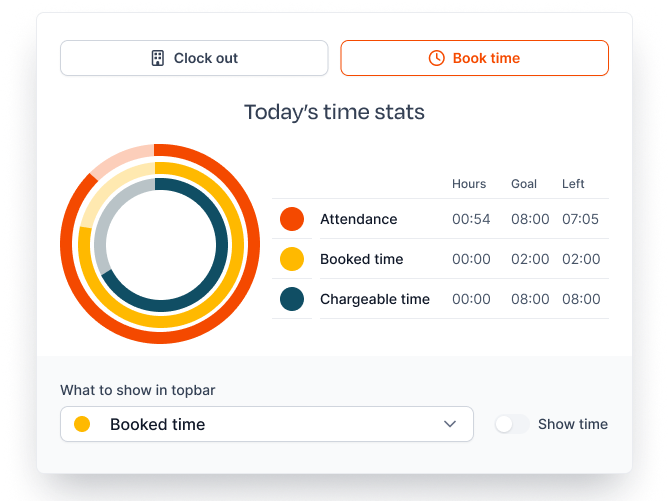How can a service company tell how productive it is? That’s actually not so easy to answer. The challenge is to find a metric that’s both meaningful and practical to implement.
At first glance, for example, profit or revenue seem like good indicators of productivity. After all, they reflect the company’s financial outcome for its efforts. But these numbers are a bit too abstract: how much revenue the company makes isn’t just about employee productivity. Revenue and profit are affected by factors outside any one person’s control—like market conditions, pricing strategies, or cost structures.
Since that approach is too vague and can only be measured in hindsight, at Leadtime we use a definition of productivity that looks at how much of their working time employees spend on value-creating activities.
To do that, all work in the company is sorted into four categories (“value groups”):

Value group | Description | Examples |
A) Value-adding activities | Activities that directly contribute to generating revenue and are immediately visible to the customer. | Development projects for customers, customer orders, services as part of customer projects. |
B) Indirect value-adding activities | Tasks that don't directly generate revenue but support and optimize service delivery. | Quality management, internal project planning, documentation, resource management. |
C) Administrative activities | Tasks necessary to manage and keep the company running, but that don’t bring direct value to the customer. | Accounting, bookkeeping, HR management, internal meetings. |
D) Waste | Lost time or activities that don’t generate any value for the company or customer and should be avoided or reduced. | Unproductive waiting times, technical failures, inefficient processes, unnecessary meetings. |
Which value group a project belongs to, can be set in the project settings Projects → [Select Project] → Tab Settings
So high productivity means that the employees spend a large part of their working time in value group A, so in value-adding activities.
This makes it possible to monitor how productive the company is working in real time and quickly make adjustments.
Your own time tracking data provides a meaningful metric for the quality of work. This can be easily and promptly influenced and improved by employees. The focus is on the actual use of available working time, which allows a realistic assessment of productivity.
Dividing working time into value groups can help identify areas where time is being wasted, providing a foundation for continuous improvement processes. It also creates awareness for time management and prioritization among employees.
The term capacity means the contracted working hours of an employee per week. For a full-time position, this is usually 40 hours per week.
The total capacity of a company is the sum of all individual capacities. A company with ten employees working 40 hours per week each has a total capacity of 400 hours per week.
In Leadtime, capacity planning is done on a weekly basis, because the available working hours in the company are always changing—like due to vacations, sick leave, or part-time arrangements. These changes are included in the productivity measurement so we get a realistic picture of the actual usable working time.
In the end, productivity—and therefore a company's success—depends on how the available capacity is used. For example, if an employee uses all their working hours for billable client projects, that's a productivity of 100 percent.
To measure productivity this accurately, we track time in Leadtime on three levels:

This means the time an employee spends at their workplace. The employee checks in to the system in the morning and checks out in the evening. This attendance time gets compared to the contractually agreed working hours stored in the system. For example, if an employee is supposed to be present for 8 hours according to their contract but is only there for 7.5 hours, that's 0.5 negative hours.
Attendance tracking (clock in and out)
Employees should document all of their time in the office by booking time to tickets and tasks. Leadtime compares the contractually agreed working hours with the ticket entries made that day. For example, if an employee is present for 8 hours but has only booked a total of 6.5 hours across five different tickets, then 1 hour of office time is not documented.
Here you can set daily targets for how much of their working time employees should spend on valuable, revenue-generating work. For developers, for example, it can make sense to set a high value like 6 hours. That means the employee should book at least 6 hours of billable time within their documented working hours every day.